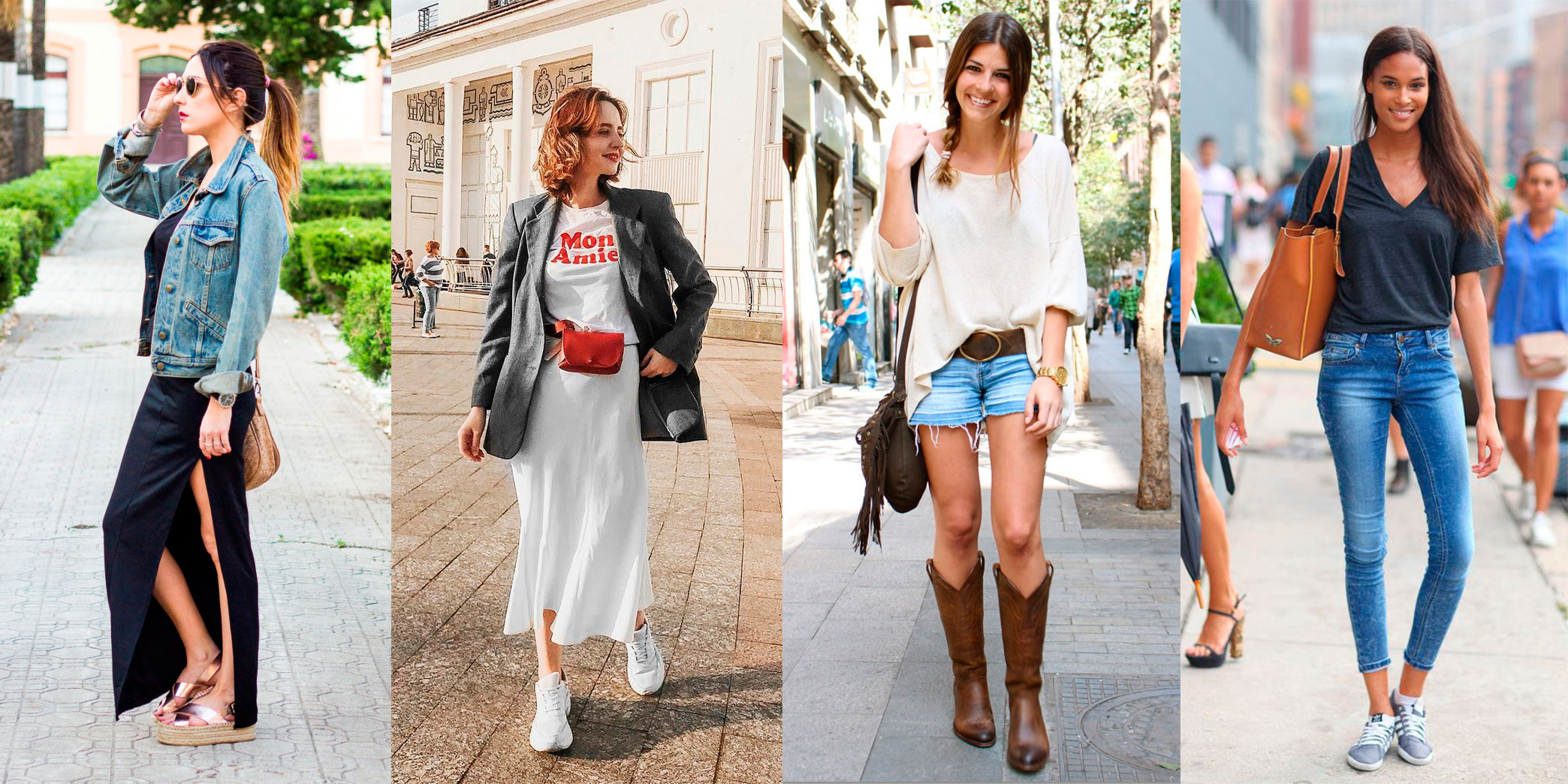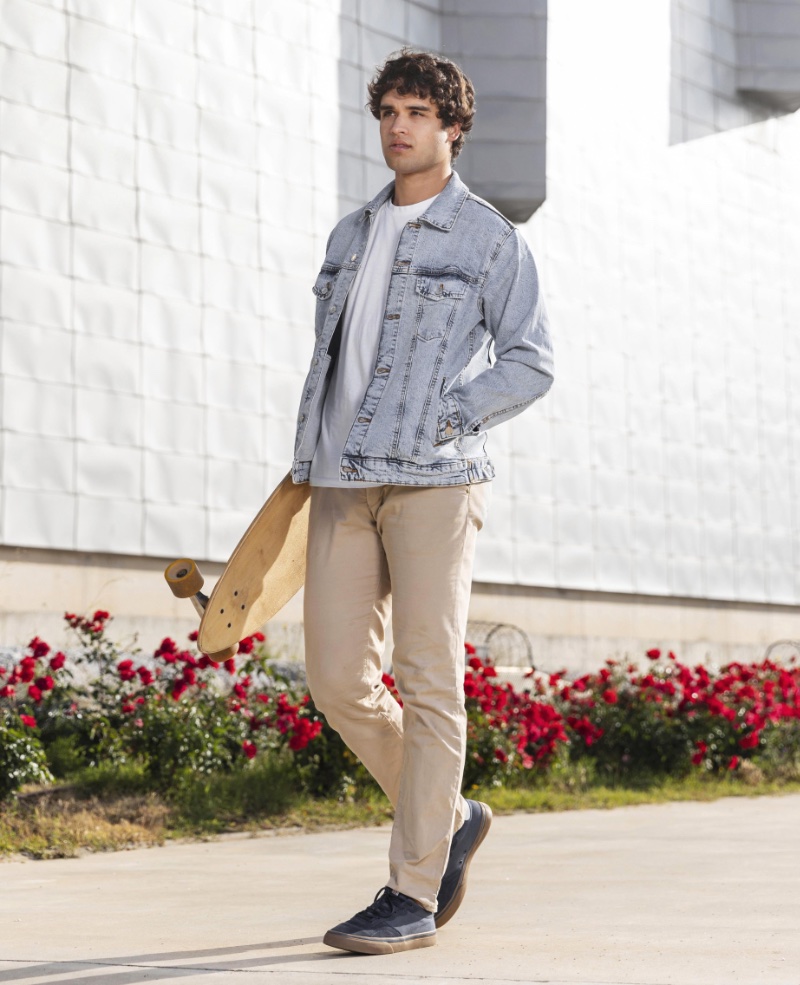

Table of Contents
Introduction
Casual Style – In recent years, the world of fashion has undergone a transformation, with casual style emerging as a dominant trend. Casual style, once considered a laid-back or even sloppy approach to dressing, has evolved into a major force in both streetwear and high fashion. It’s now a perfect blend of comfort, personality, and expression. From oversized sweaters to athleisure, casual style reflects the fast-paced, interconnected world we live in today. But what exactly defines casual style, and how did it become so prevalent in modern society?
This article will delve into the history, evolution, and future trends of casual style. We will explore how it has become so integral to daily life, why it resonates with diverse demographics, and its significance in fashion today. Whether you’re looking to update your wardrobe or understand the cultural significance of casual fashion, this comprehensive guide will cover all you need to know.
What is Casual Style?

Casual style is more than just a way of dressing—it is a cultural movement that embodies comfort, versatility, and personal expression. Over the years, casual fashion has evolved from being just weekend wear to a dominant force in the fashion industry. With modern innovations in fabric technology, sustainable materials, and changing workplace dress codes, casual style has never been more relevant.
This article explores the concept of casual style, its evolution, relevance in today’s society, and how innovations are shaping its future. Whether you’re looking to refine your casual wardrobe or understand the societal impact of this fashion movement, this guide will provide a comprehensive look at what casual style truly represents.
The Definition of Casual Style
Casual style refers to relaxed, comfortable clothing that prioritizes ease of movement without sacrificing aesthetics. Unlike formal or business attire, casual fashion embraces simplicity, practicality, and individuality. It is typically characterized by:
Relaxed Fits – Loose and comfortable silhouettes that allow free movement.
Versatile Pieces – Clothing that can be mixed and matched effortlessly.
Timeless Basics – Essentials like jeans, t-shirts, sneakers, and hoodies.
Minimal Accessories – Understated add-ons such as caps, sunglasses, and simple jewelry.
Adaptability – Can range from sporty to streetwear or even business casual.
Casual fashion is not limited to one particular style but serves as an umbrella term for multiple aesthetics that prioritize comfort and practicality. From classic denim-and-tee combinations to trendy athleisure outfits, casual style offers endless variations for self-expression.
The Evolution of Casual Fashion
1. The Birth of Casual Wear (Early 20th Century)
The origins of casual style can be traced back to the early 20th century when sportswear and leisurewear gained popularity. Before this period, strict dress codes dictated daily fashion. However, with industrialization and cultural shifts, people started embracing relaxed clothing for leisure activities.
2. The Rise of Denim and Workwear (1950s-1960s)
Denim jeans, originally worn by laborers in the late 1800s, became a staple in mainstream fashion thanks to Hollywood icons like James Dean and Marlon Brando. The rebellious youth movement embraced casual clothing as a statement against rigid societal norms.
3. The Influence of Pop Culture (1970s-1990s)
Casual style exploded in popularity through music, sports, and media. The 1970s saw the rise of disco fashion, which integrated casual elements like bell-bottom jeans and sneakers. The 1980s introduced sportswear brands like Nike and Adidas, revolutionizing everyday fashion. By the 1990s, grunge and hip-hop culture further cemented casual wear’s dominance with oversized flannels, baggy jeans, and graphic t-shirts.
4. The 21st Century Revolution: Techwear, Athleisure, and Minimalism
The 2000s and 2010s witnessed the rise of streetwear, techwear, and athleisure. Luxury brands began incorporating casual elements into high fashion, blurring the lines between everyday clothing and designer wear. Today, casual fashion is driven by digital trends, influencer culture, and sustainable innovations.
Why Casual Style is Relevant Today
1. The Comfort-Driven Lifestyle
In today’s fast-paced world, people value convenience and ease, making casual fashion more appealing than ever. The pandemic further accelerated the demand for comfortable clothing as remote work and hybrid jobs became the norm. Loungewear and relaxed fits became wardrobe essentials.
2. The Influence of Social Media & Influencers
Platforms like Instagram, TikTok, and Pinterest have popularized casual styles, making trends more accessible to the public. Influencers and celebrities showcase relaxed yet stylish outfits, inspiring millions to embrace casual fashion.
3. The Changing Workplace Dress Code
The traditional suit-and-tie culture is fading as more companies adopt business casual or smart-casual dress codes. Sneakers, polo shirts, and chinos have replaced stiff corporate attire, allowing professionals to feel comfortable while maintaining a polished appearance.
4. Sustainability and Ethical Fashion
The modern consumer is more conscious of ethical and sustainable fashion choices. Brands are shifting towards eco-friendly materials, ethical production processes, and timeless designs to promote responsible fashion consumption.
Innovations Shaping the Future of Casual Fashion
1. Smart Fabrics & Wearable Technology
Technology is revolutionizing the way we dress. Smart fabrics with moisture-wicking, temperature control, and antibacterial properties are becoming more common in casual fashion. Wearable tech, such as smart jackets with heating capabilities, is blending fashion with function.
2. Sustainable & Recycled Materials
Eco-conscious brands are experimenting with organic cotton, hemp, recycled polyester, and plant-based leather to create sustainable casual wear. The rise of thrifting and second-hand shopping also aligns with the casual fashion ethos of longevity and versatility.
3. The Rise of Gender-Neutral Fashion
Casual fashion is breaking gender norms, with unisex clothing becoming a major trend. Oversized silhouettes, neutral colors, and gender-fluid designs are now widely accepted and embraced by fashion enthusiasts worldwide.
4. The Influence of AI & Virtual Fashion
AI-powered fashion recommendations and virtual try-ons are reshaping online shopping experiences. Brands are using artificial intelligence to predict trends and offer personalized styling solutions, making casual fashion more dynamic and personalized.
Building a Timeless Casual Wardrobe
If you want to master casual style, consider incorporating these wardrobe staples:
Basic White T-Shirt – A versatile piece that pairs with almost anything.
Denim Jeans – A timeless classic that never goes out of style.
Sneakers – Comfortable and stylish footwear for any occasion.
Hoodies & Sweatshirts – Perfect for layering in colder seasons.
Chinos or Joggers – A step up from jeans, offering a smart-casual look.
Casual Blazer or Overshirt – Adds sophistication without looking too formal.
Minimal Accessories – A stylish watch, sunglasses, or a simple chain can enhance the look.
Casual style is more than just a fashion trend—it is a lifestyle choice that prioritizes comfort, versatility, and self-expression. As society continues to embrace relaxed dress codes, technological advancements, and sustainability, casual fashion will continue to evolve and redefine how we present ourselves daily.
Whether you are dressing for a casual outing, a work-from-home setup, or a business-casual event, the key to nailing casual style lies in finding the perfect balance between comfort and aesthetics.
As innovations in fashion continue to push boundaries, one thing is certain: casual style is here to stay. Embrace it, personalize it, and make it your own.
The History of Casual Style
Casual style has become an essential part of modern fashion, but its origins go far beyond mere comfort. From workwear to sportswear, casual fashion has evolved to reflect cultural, social, and technological changes. Over the decades, it has transformed from functional attire into a global phenomenon embraced by people from all walks of life.
In this article, we will take a deep dive into the history of casual style, its evolution through different eras, its relevance in today’s world, and how innovation continues to shape its future.
The Early Roots of Casual Wear
1. The 19th Century: Workwear as the First Casual Clothing
Casual style can trace its roots back to the 19th century when functional clothing for laborers and miners began gaining popularity. Denim jeans, originally developed by Levi Strauss in the 1870s, became a staple for American workers due to their durability. Similarly, loose-fitting shirts and simple leather boots provided comfort and protection for those working long hours in factories and fields.
At this stage, clothing was primarily designed for utility rather than aesthetics. However, these practical garments would later evolve into key elements of casual fashion.
2. The Early 20th Century: The Birth of Sportswear
In the early 1900s, leisure activities like golf and tennis became more popular among the middle and upper classes. As a result, sportswear emerged, combining practicality with a more relaxed style. Polo shirts, introduced by tennis players like René Lacoste, and comfortable slacks replaced the rigid formalwear that had previously dominated everyday attire.
This shift marked the beginning of a more relaxed approach to dressing, setting the foundation for modern casual wear.
The Rise of Casual Fashion in the 20th Century
1. The 1920s-1930s: The Influence of Hollywood and American Icons
The film industry played a crucial role in the growing popularity of casual style. Hollywood stars such as Clark Gable and Gary Cooper popularized relaxed tailoring, including pleated trousers and casual button-up shirts. This period also saw the rise of knitwear, with sweaters and cardigans becoming common fashion choices.
2. The 1940s-1950s: The Birth of Youth Culture and Denim’s Domination
After World War II, casual fashion took another leap forward with the rise of youth culture. The 1950s saw denim jeans become a symbol of rebellion, thanks to figures like James Dean and Marlon Brando. Paired with white t-shirts and leather jackets, this look became synonymous with effortless cool.
At the same time, Hawaiian shirts, polo shirts, and chinos gained popularity as casual alternatives to formal suits, especially in warmer climates.
3. The 1960s-1970s: The Counterculture Movement and Free-Spirited Fashion
The 1960s and 1970s marked a period of cultural revolution, which was reflected in fashion. The hippie movement embraced free-flowing fabrics, tie-dye shirts, denim bell-bottoms, and ethnic prints. At the same time, sportswear brands like Adidas and Puma gained traction as sneakers and tracksuits became everyday essentials.
The era also introduced the concept of “casual Fridays” in workplaces, allowing employees to dress more comfortably while maintaining professionalism.
4. The 1980s-1990s: The Rise of Streetwear and Athleisure
The late 20th century saw a shift towards sportswear-inspired casual fashion. Hip-hop culture played a pivotal role in defining streetwear, with oversized t-shirts, baggy jeans, and sneakers becoming style staples. Brands like Nike, Champion, and Tommy Hilfiger capitalized on this movement, further cementing casual wear’s dominance.
The 1990s introduced grunge fashion, popularized by bands like Nirvana. Flannel shirts, ripped jeans, and combat boots became the go-to look for rebellious youth. At the same time, the emergence of tech-driven innovations led to the development of synthetic fabrics, making casual clothing more durable and functional.
Casual Fashion in the 21st Century
1. The 2000s: Casual Wear Meets High Fashion
The 2000s saw casual fashion break into the luxury market. Designers like Marc Jacobs and brands like Gucci started incorporating sneakers, hoodies, and relaxed tailoring into their collections. The rise of fast fashion brands such as H&M and Zara also made trendy casual wear more accessible to the masses.
2. The 2010s: The Boom of Athleisure and Minimalism
Casual fashion took on a new form with the rise of athleisure—clothing that blends athletic and leisurewear. Leggings, joggers, and performance-based materials became everyday essentials. At the same time, minimalist fashion gained traction, with neutral colors, simple silhouettes, and sustainable fabrics shaping modern casual style.
Social media and influencer culture played a significant role in popularizing these trends, as Instagram and Pinterest became platforms for sharing and discovering fashion inspiration.
3. The 2020s and Beyond: The Future of Casual Fashion
Casual wear continues to evolve, influenced by technology, sustainability, and cultural shifts. Key trends shaping the future include:
Smart Fabrics – Wearable technology, moisture-wicking materials, and self-cleaning fabrics are becoming more common.
Sustainable Fashion – Brands are prioritizing eco-friendly materials, ethical production, and circular fashion.
Gender-Neutral Clothing – Unisex casual wear is breaking traditional fashion norms.
Digital Fashion & Virtual Try-Ons – Augmented reality and AI-driven shopping experiences are changing the way people engage with casual style.
The Cultural Impact of Casual Fashion
Casual fashion is more than just a style choice—it reflects societal changes and personal identity. It has played a role in:
Self-Expression – Casual clothing allows individuals to showcase their personality and creativity.
Workplace Evolution – The shift towards remote work and flexible dress codes has redefined professional attire.
Social Movements – Fashion has been used as a tool for activism, with slogans, graphic tees, and protest attire making statements.
Technology Integration – Smart casual wear is blending fashion with innovation, making everyday clothing more functional.
Casual style has undergone a remarkable transformation, evolving from workwear and leisurewear to a dominant force in global fashion. Its ability to adapt to societal trends, technological advancements, and cultural influences ensures its continued relevance.
From denim jeans to luxury streetwear, casual fashion has become a universal language that transcends generations and borders. As we move forward, innovation and sustainability will shape its future, ensuring that casual style remains a cornerstone of modern living.
Casual fashion isn’t just about looking good—it’s about feeling comfortable and confident in your own skin. So whether you prefer classic basics, trendy streetwear, or a blend of both, one thing is certain: casual style is here to stay.
Key Elements of Casual Style

Casual style can vary depending on personal preference, but there are a few core elements that define it. Here’s a breakdown of the key components:
1. Comfortable Fabrics:
Casual style is all about comfort, and that starts with the fabric. Look for soft, breathable fabrics like cotton, linen, and jersey. These fabrics are perfect for everything from t-shirts to button-down shirts and even dresses.
2. Relaxed Fits:
Gone are the days of tight, uncomfortable clothes. Today’s casual fashion emphasizes relaxed fits—loose pants, oversized jackets, and roomy tops. This not only provides comfort but also allows for more freedom of movement.
3. Versatile Basics:
A casual wardrobe revolves around versatile basics. Think of plain t-shirts, denim jackets, button-up shirts, and sneakers. These wardrobe staples can be mixed and matched to create a variety of looks, making them the foundation of casual style.
4. Accessories:
Accessories are key to elevating casual style. Whether it’s a stylish watch, a simple necklace, or a trendy cap, accessories can add personality to an otherwise simple outfit. In casual fashion, accessories are often used to add a pop of color or make a bold statement.
How Casual Style Has Evolved in Recent Years
1. Influence of Social Media:
Social media platforms like Instagram and TikTok have played a significant role in shaping and spreading casual style trends. Fashion influencers and everyday people alike have used these platforms to showcase their unique takes on casual dressing. Trends like athleisure, oversized fits, and bold graphic tees have been popularized by online influencers, making casual fashion more accessible.
2. Collaborations with High Fashion:
In recent years, high-end brands have collaborated with streetwear labels, bringing casual style into the luxury market. Brands like Gucci and Balenciaga have incorporated casual elements like sneakers and hoodies into their collections, further blurring the lines between formal and informal wear.
3. Sustainability and Ethical Fashion:
As consumers become more environmentally conscious, there’s been a growing demand for sustainable casual clothing. Brands are shifting toward eco-friendly fabrics, like organic cotton, recycled polyester, and hemp, to meet this demand. Ethical fashion has also become a part of casual style, with many consumers seeking out brands that prioritize fair labor practices.
The Future of Casual Style
1. Tech-Enhanced Casual Wear:
Looking ahead, casual style will continue to evolve with technology. Smart fabrics, such as clothing that adjusts to temperature changes or has built-in fitness tracking, could become more common in everyday wardrobes. As fashion and technology merge, casual wear will become even more functional and adaptable.
2. Gender-Neutral Fashion:
Casual style is increasingly embracing gender-neutral clothing. Many brands are moving away from traditional gender-specific designs, creating clothing that can be worn by anyone. This trend not only reflects a shift toward inclusivity but also allows for more creativity and flexibility in casual fashion.
3. Sustainability at the Forefront:
As environmental concerns continue to grow, we can expect sustainable and ethical practices to remain a major part of the casual fashion industry. Brands will focus more on circular fashion, where clothing is designed to be recycled or reused, reducing waste and the overall environmental impact.
Conclusion
Casual style has come a long way from its humble beginnings. What was once considered an afterthought in fashion is now a powerful cultural statement, influencing everything from corporate dress codes to runway shows. Its evolution is a testament to the ever-changing nature of fashion and society, reflecting our desire for comfort, self-expression, and inclusivity.
As casual style continues to adapt to new trends and technologies, one thing remains clear: it will remain an essential part of how we dress and express ourselves in the future. With its blend of comfort, creativity, and sustainability, casual fashion is not just a trend—it’s a lifestyle choice that is here to stay.
This article provides a comprehensive look at casual style, its history, and its cultural significance, offering valuable insights for readers. Its conversational tone and engaging style make it accessible to a wide audience, and its focus on SEO-friendly keywords ensures it will perform well in search rankings.
